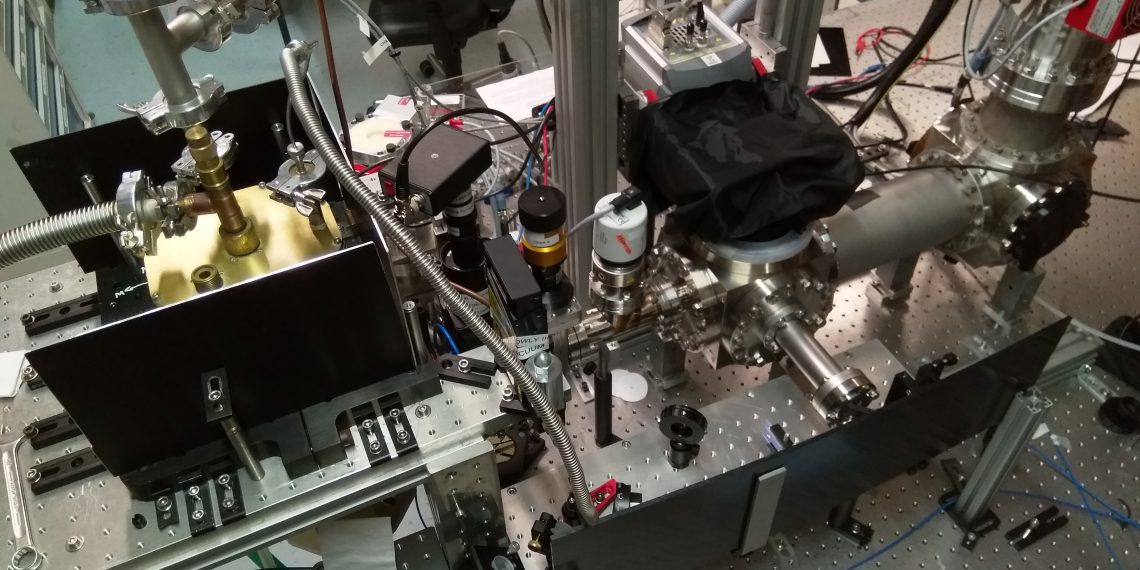Molecules are to be cooled down at the University of Stuttgart in order to exhibit their quantum properties. The researchers participating in the project hope that this will lead to insights for basic research. Pfeiffer Vacuum’s technology will be used to effectively isolate the extremely cold molecules from the much hotter environment. The company not only supports industry, but also customers from research and development with technology and advice.
Energy management, transportation, semiconductor electronics – many industries dream of superconductors at room temperature. Materials without electrical resistance have the potential to completely revolutionize numerous applications. However, superconductivity has so far only been seen at very low temperatures of around ‑180 degrees Celsius. In many cases, applications only become economically viable when this extreme cooling is no longer necessary.
As yet, however, it is as difficult to understand why some materials achieve superconductivity at comparably high temperatures as the question of whether this could even be possible at room temperature. What is certain is that there is a macroscopic quantum effect.
Ironically, researchers are seeking to understand these effects by using systems that generate even lower temperatures. At the University of Stuttgart, for example, experiments are being carried out to investigate the quantum effects of molecules that are cooled by special lasers to such an extent that their temperatures are only a few billionths of a degree above the absolute zero point of ‑273.15 degrees Celsius.
In contrast to previous experiments, molecules are to be cooled using lasers instead of atoms. The Stuttgart researchers are using an upstream helium cooling system due to the more complex molecular structure.
This is where Pfeiffer Vacuum’s technology comes in. “Alongside its excellent pre-vacuum compatibility, the Hipace 300 H is optimized for light gases such as hydrogen and helium,” explains Fabian Frey, Market Manager of Research and Development Customer Support. While his colleagues mostly deal with practical applications on a large industrial scale – semiconductor industry, coating, and automotive engineering – Fabian Frey finds the vacuum solutions for research institutions.
Frey is particularly enthusiastic about the pump’s handling of helium. “Along with hydrogen, this is one of the most demanding gases that can be pumped. The back diffusion in the pump system is particularly high and the efficiency correspondingly poorer. This is where the Hipace is the top performer in the market,” says Frey.
The experiments carried out by the Stuttgart researchers are mainly directed at developing new so-called quantum simulators. Quantum effects are sometimes so complex to calculate that they cannot be simulated even with the high computing power of contemporary supercomputers. Quantum simulators are used to investigate simplified models in experimental investigations. In the process, the cold molecules promise to provide exciting new insights. The findings could eventually lead to new technical applications such as quantum sensors or quantum computers, says Frey.
Significant advances could also be made in the understanding of quantum effects in superconductors and other materials. The system in which the molecules are observed is not large – it only occupies about three cubic meters. In order to reach and maintain the required low temperatures following precooling with helium, the molecules being investigated must be captured and cooled by lasers and magnetic fields in an ultra-high vacuum generated by the Pfeiffer Vacuum turbopump. This is because even the slightest contact with the outside world would immediately reheat the molecules. Due to the great challenges of the initiative, the current project has no specific duration; the research group will devote several years to basic research and during this time Fabian will support the customer with their vacuum needs. “This is an ongoing process, we go in and out of the customer’s facilities and usually visit them when vacuum technology advice is required,” he says. As a result, he is constantly up to date on the status of projects.
His company is well known in the research and development market, “because that is where our roots lie,” says Frey – after all, Pfeiffer Vacuum is the inventor of the turbomolecular pump. In addition to turbopumps, the broad product portfolio also includes backing pumps, measuring instruments, coating systems, leak detectors and mass spectrometers. The University of Stuttgart uses several Pfeiffer Vacuum products including vacuum pumps, mass spectrometers, pressure gauges, pumping stations and systems. Pfeiffer Vacuum’s technology is also used in the multinational ITER project, CERN and the Heidelberg Ion Beam Therapy Center.
Sectors such as the process industry, semiconductor production and analytics naturally contribute more to the mechanical engineering group’s sales than customers from research and development; however, R&D customers are working on future projects. “We’re proud to be part of it,” Frey says. He sees supporting the segment also as an investment in the future of his own company – after all, there are potential applications for other market segments. The process industry could one day also benefit from the fact that molecules in Stuttgart are brought very close to zero using Pfeiffer Vacuum technology.

















